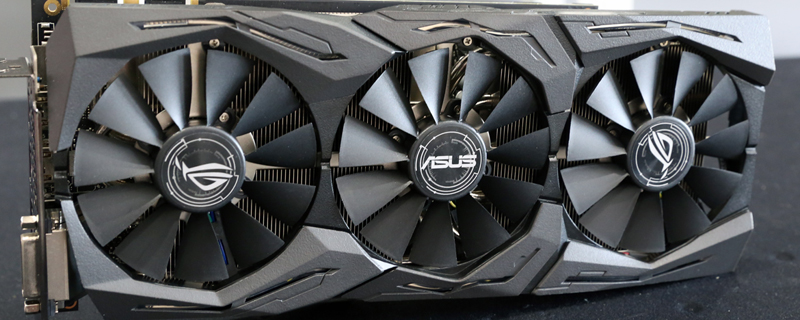ASUS ROG Strix GTX 1070 Ti Review
Conclusion
Having only just written the conclusion for the nVidia GTX 1070 Ti Founders Edition, nearly everything we’ve written there applies here.
The nVidia product range, currently consisting of the GTX 1050 Ti, GTX 1060, GTX 1070, GTX 1080 and GTX 1080 Ti, is extremely tight. We used to rag on companies for trying to dissect the market into such tiny sectors that it was almost a joke, and the introduction of the GTX 1070 Ti is in danger of turning the GTX range into a laughing stock. If you’re tight for cash, get the 1050 Ti, if you have loads of it get the 1080 Ti, and if you’re somewhere in the middle you either grab a GTX 1060 or the GTX 1070 depending upon your finances. Except now, with the introduction of the GTX 1070 Ti you get that. Graphics cards are the single biggest area of any system where spending a little extra gives you massive rewards. You’ll struggle to spot the difference between – for example – a Z370 Prime and a Z370 Maximus Extreme in daily use, but the difference between a 1050 Ti and a 1070 Ti is night and day in gaming fluidity.
But what’s done is done, how does the ASUS Strix take upon this latest GP104 GPU based card fare?
It’s exactly what you think it’s going to be. No matter how often nVidia claim that their vapour chamber and single blower fan is the perfect cooling solution, nobody else agrees and once again the performance of the partner cards bears this out. Peak boost speeds on the ASUS Strix might be only 25MHz or so better than the nVidia Founders Edition, but the average boost clock – the one that actually matters in gaming because it’s about how quick it is over a long period of time once the temperatures climb – was nearly 60 MHz quicker. We saw in every single test we ran how this more consistent level of GPU clock speed pays dividends with the ASUS around a frame or two per second better than the nVidia.
It isn’t only the performance that the ASUS improves upon. It’s more efficient, requiring about 10W less at the wall, so your electricity bill will thank you. More importantly the temperatures are seriously cool. How cool you ask? Well the nVidia Founders Edition ran at a peak of 77°C. The ASUS Strix, with an overclock in place, topped out at 60°C. Sixty. If you look at our temperature graph on the preceding page you’ll note that, water cooled models aside, the bottom three cards are all ASUS Strix models of various types. That DirectCU cooler is the freaking mutts nuts. The cats nightclothes. The knees of a bee.
The ASUS Strix GTX 1070 Ti looks brilliant, goes well, is cool and quiet and doesn’t cost the earth. If you can’t quite stretch the budget to a GTX 1080 Ti or a GTX 1080 then you can buy this and be assured that it’s every bit as fast as its slightly bigger brother, and thus it wins our OC3D Enthusiast Award. That cooler is legendary.
Discuss your thoughts of the ASUS Strix GTX 1070 Ti in our OC3D Forums.




